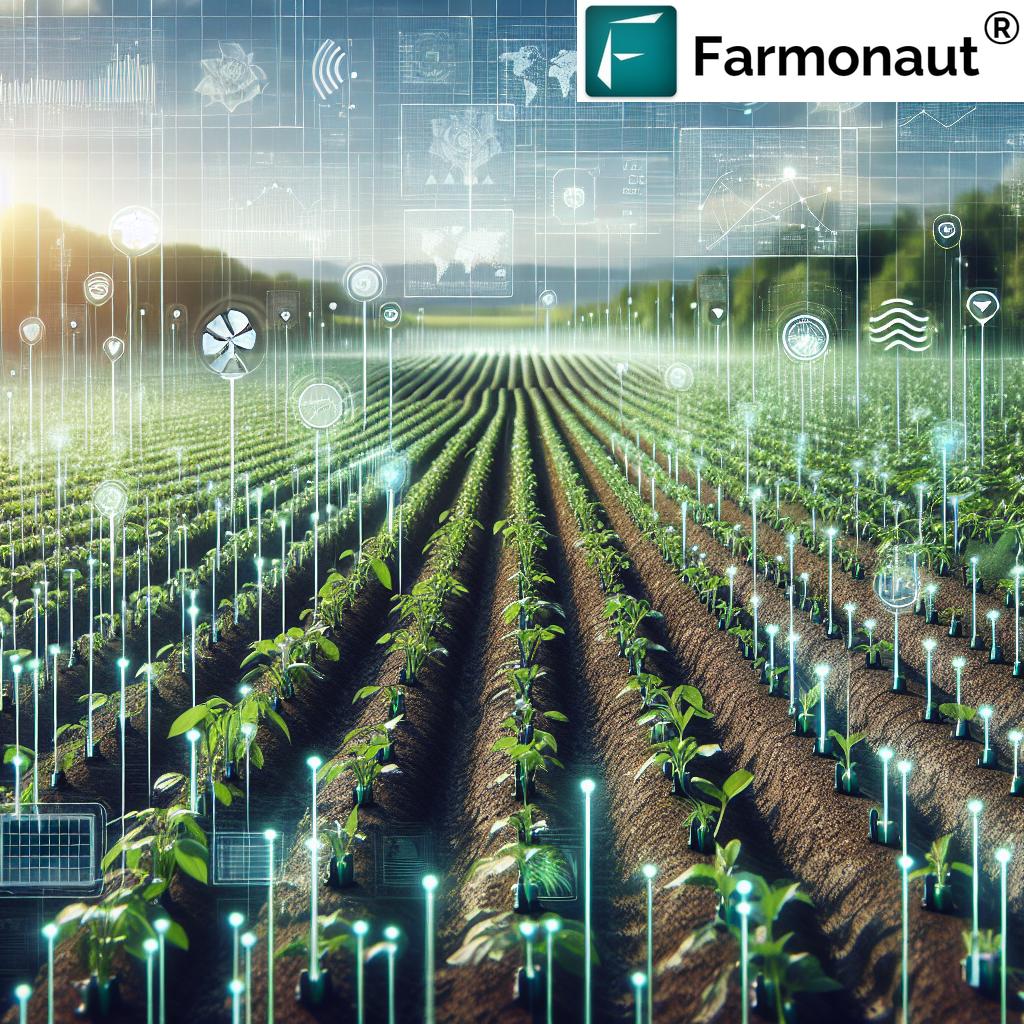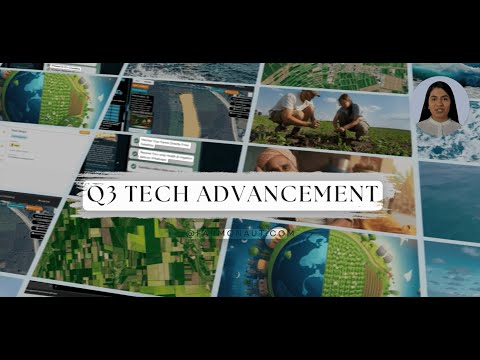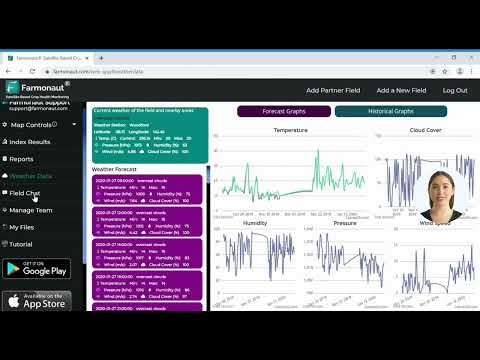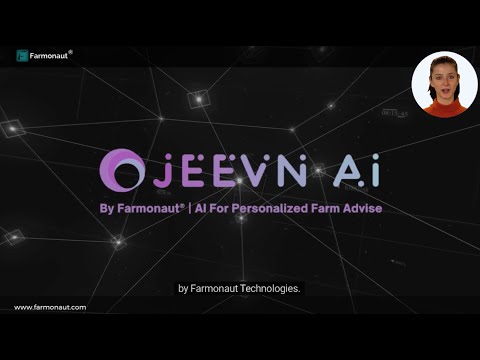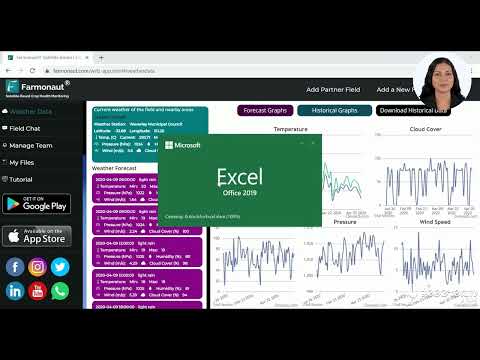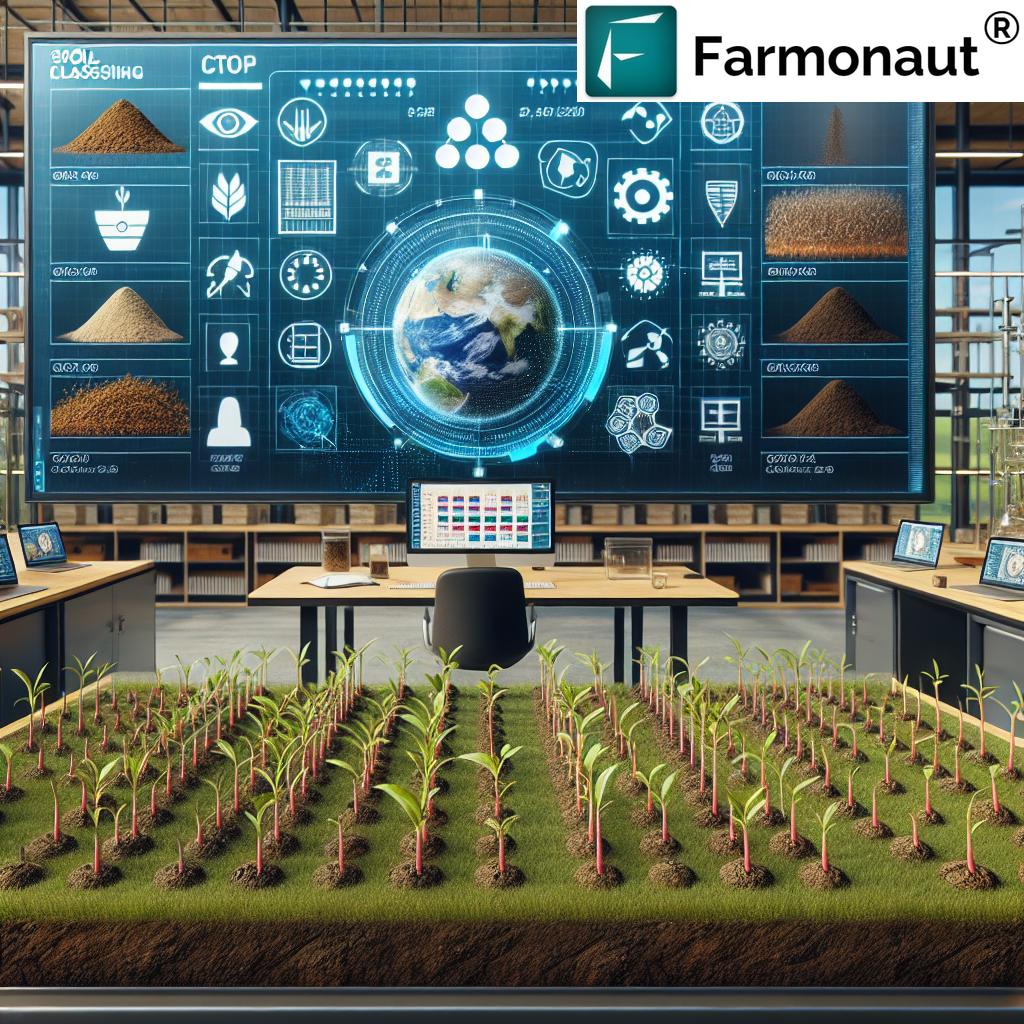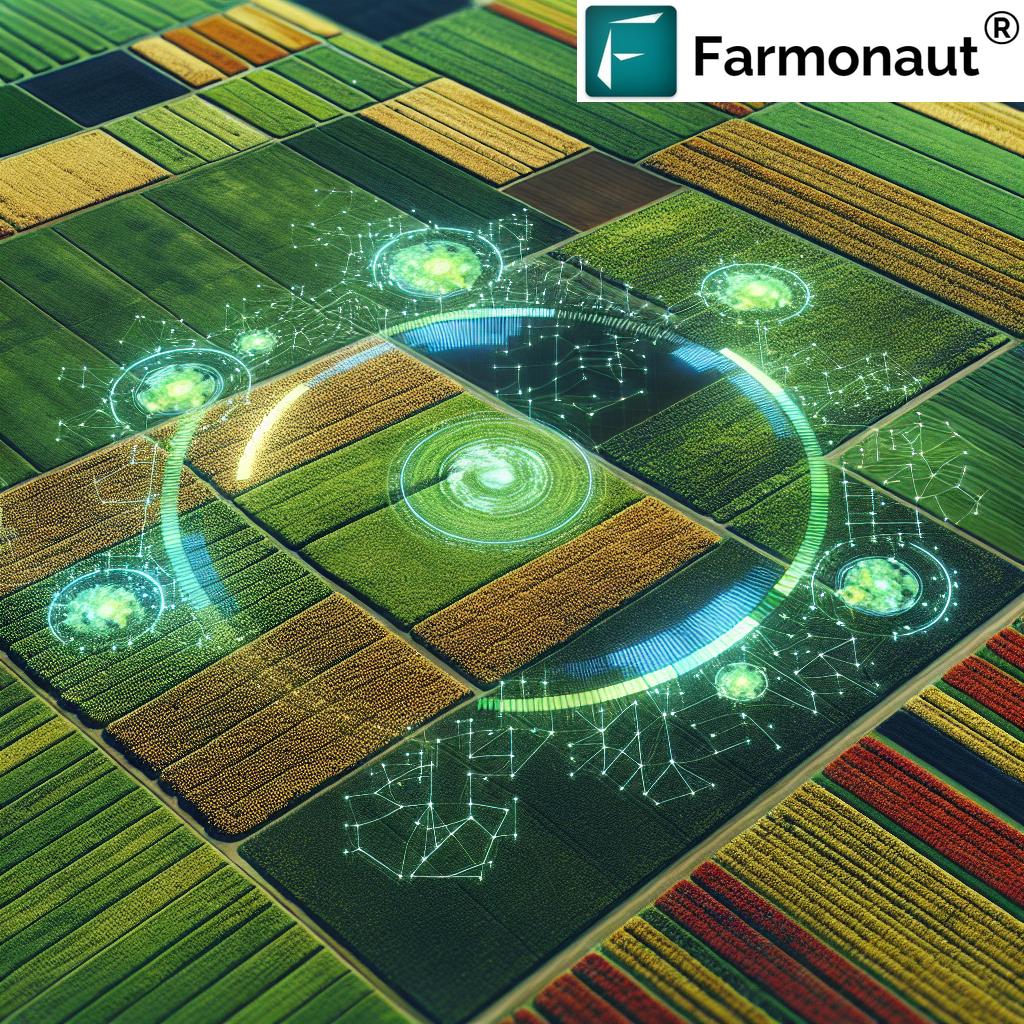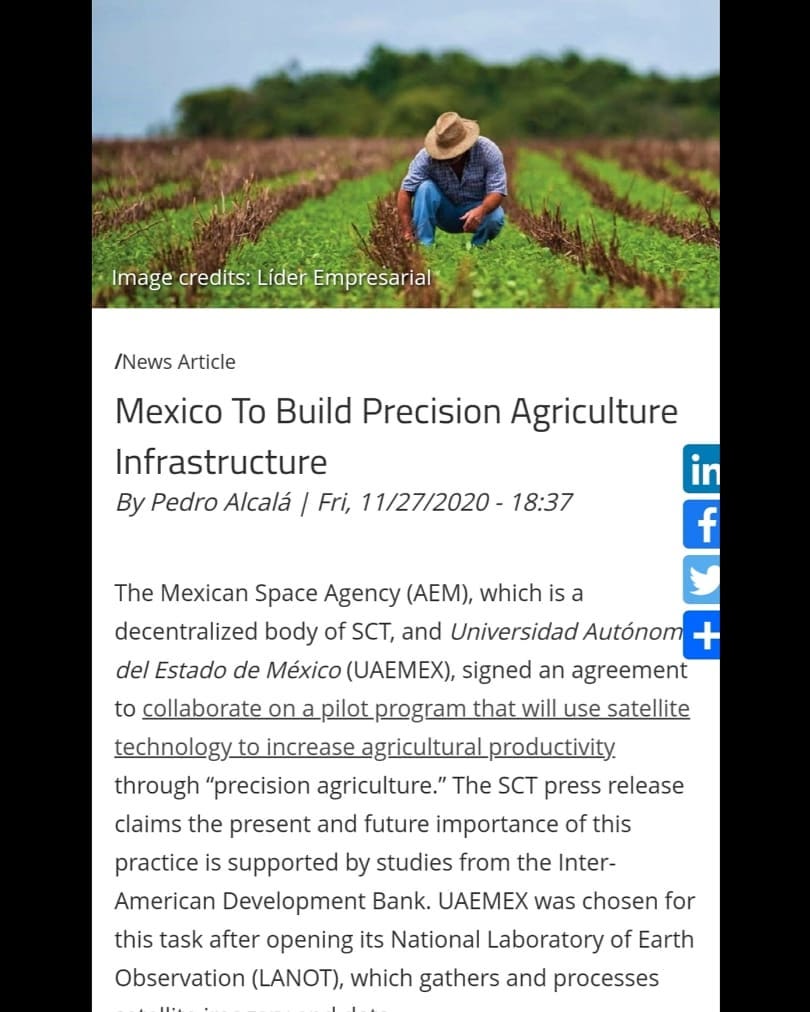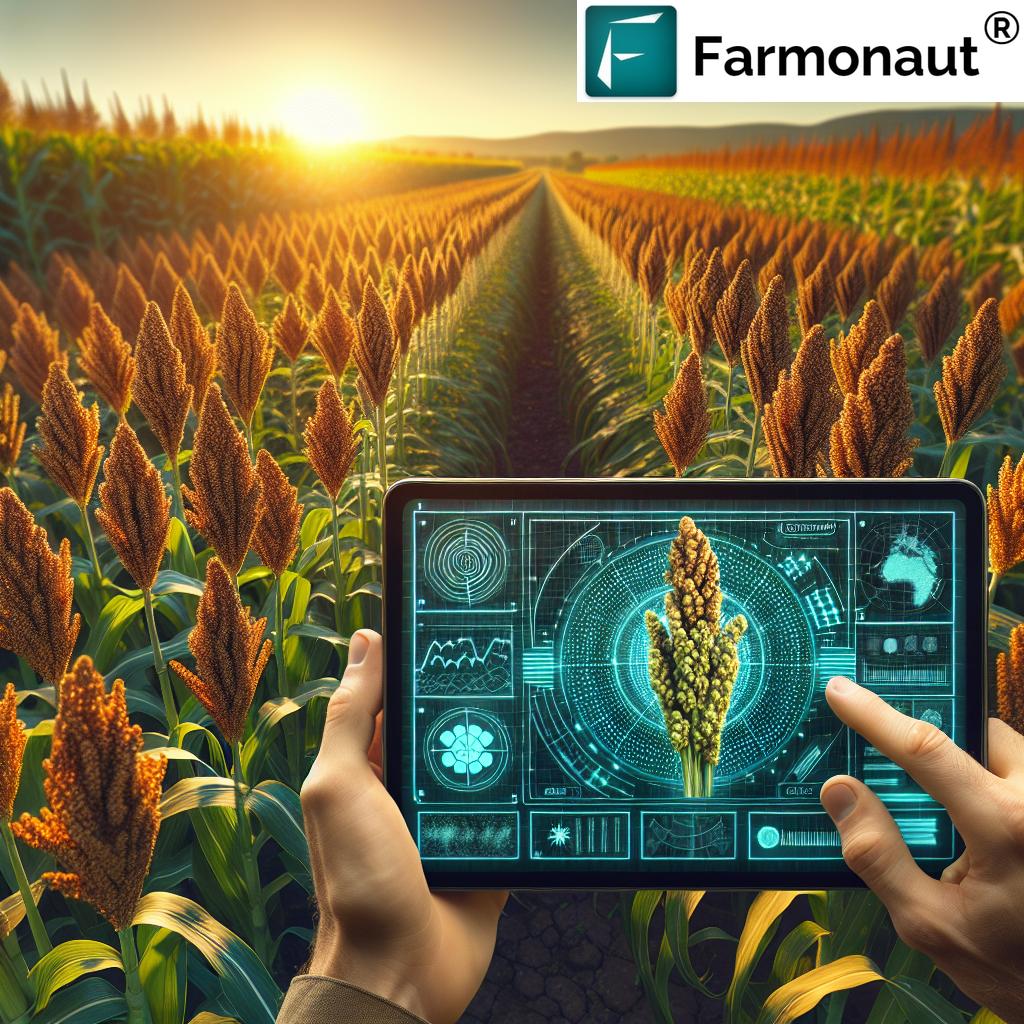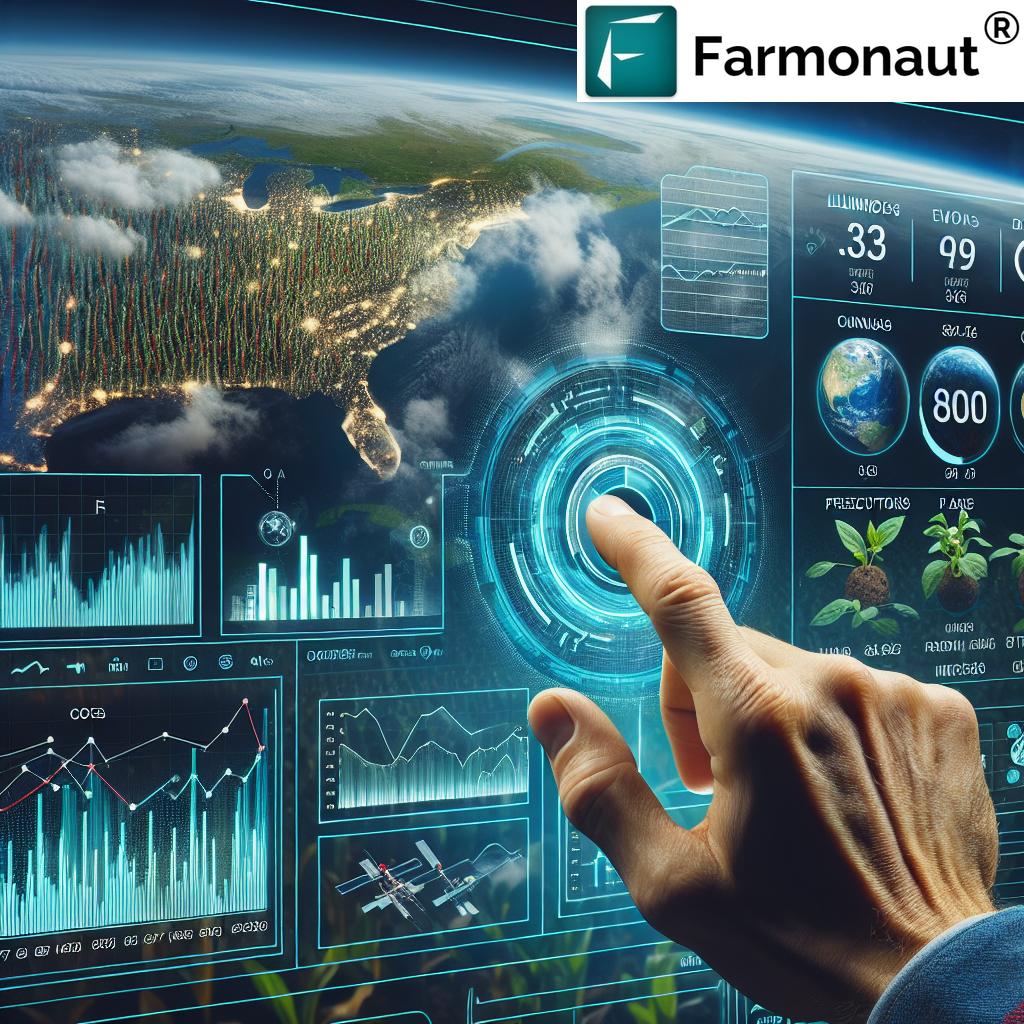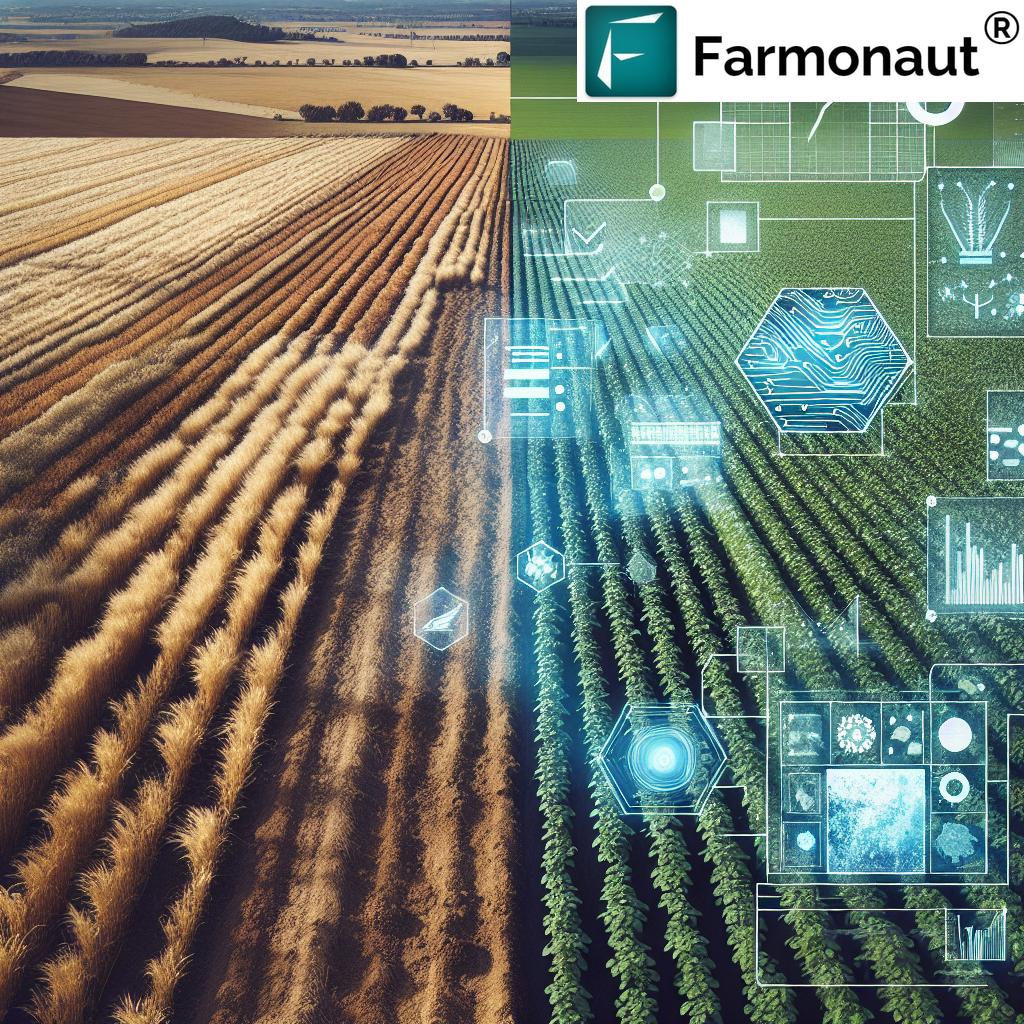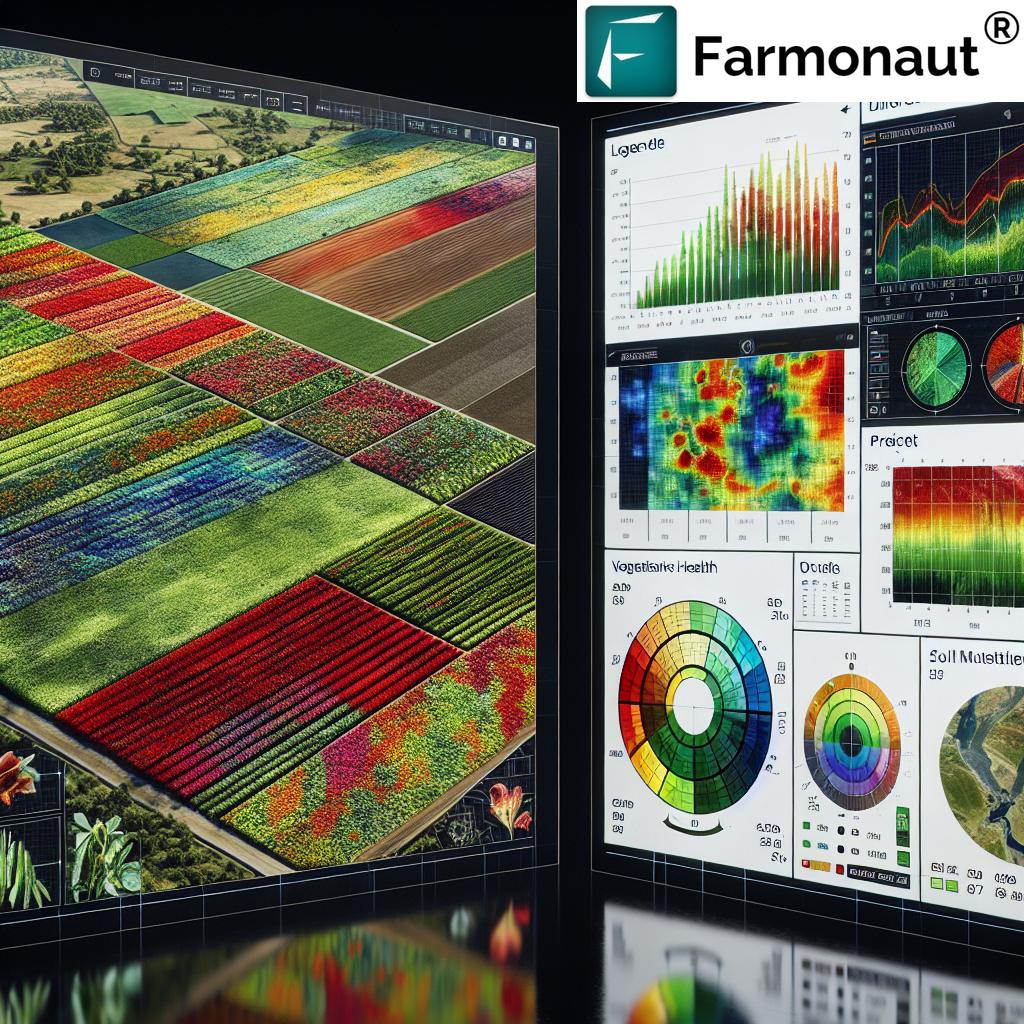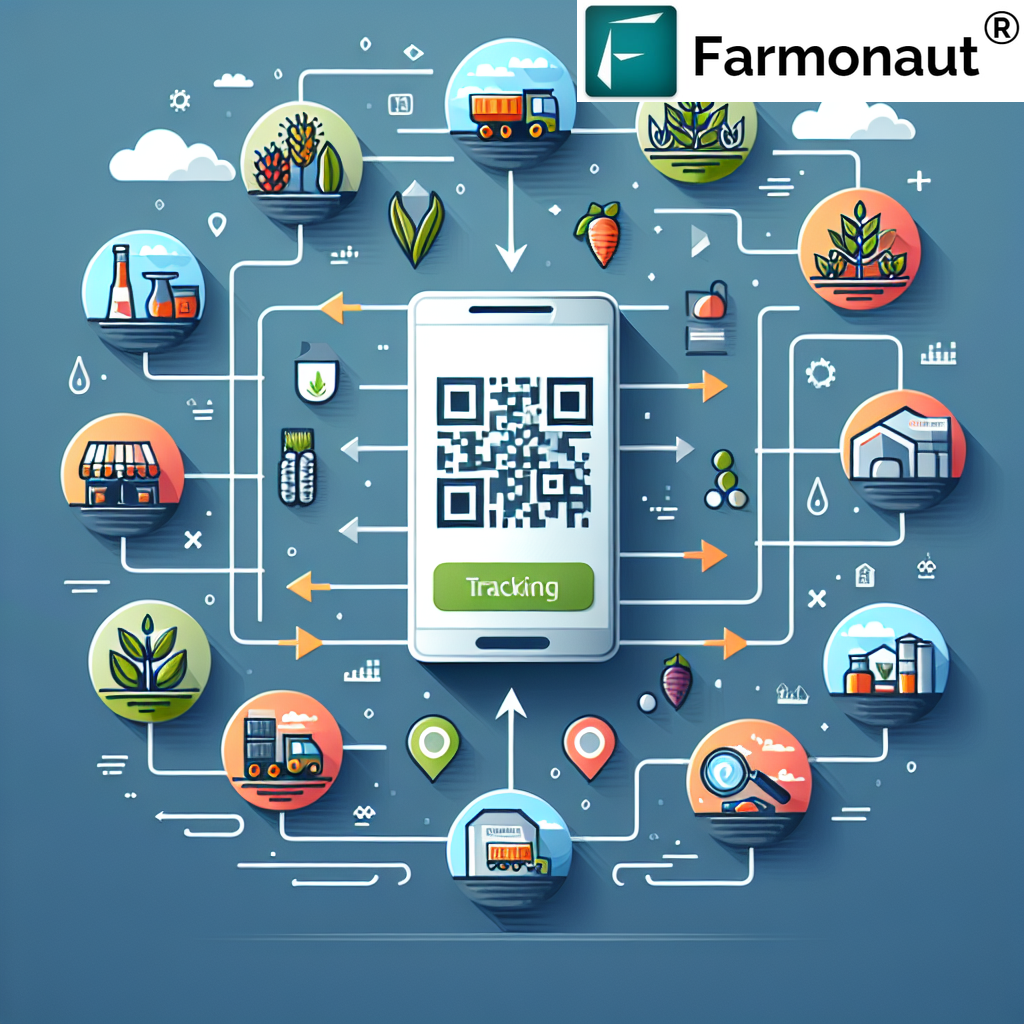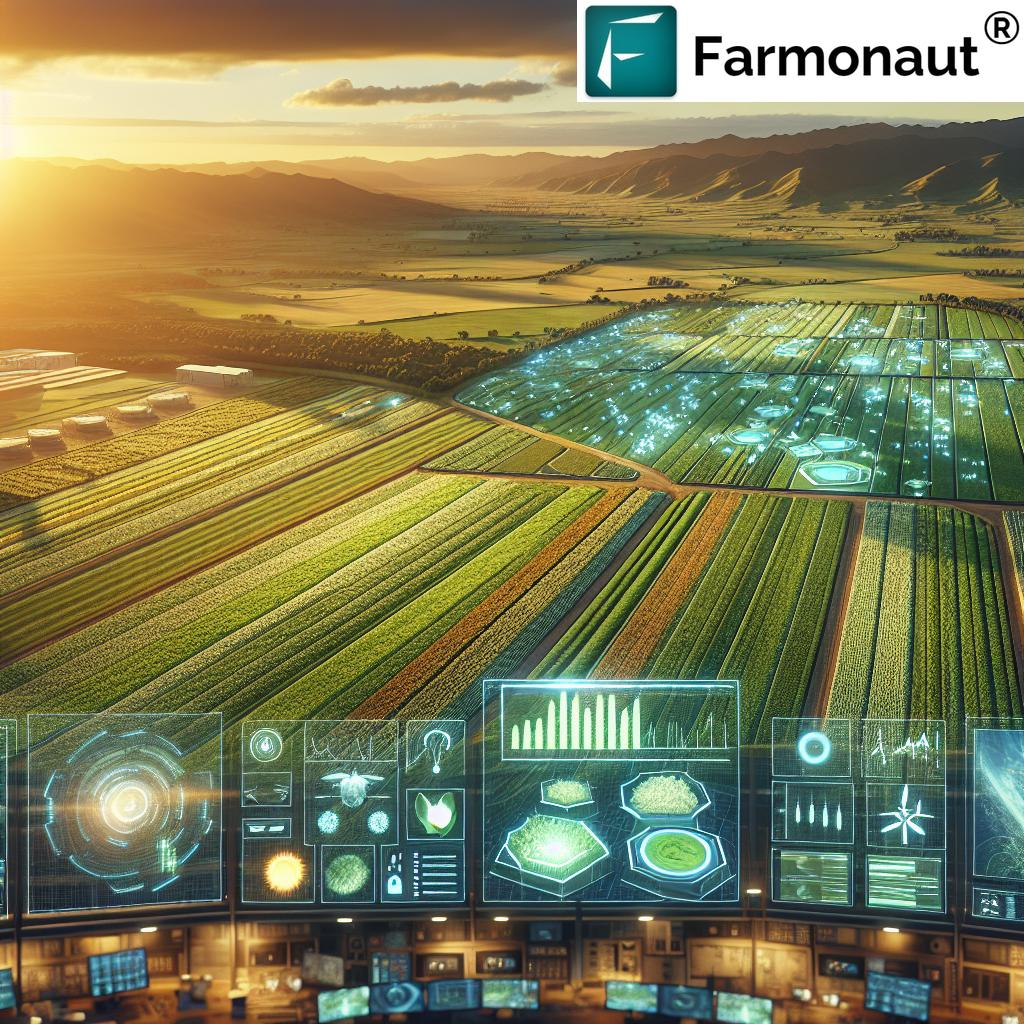IoT Based Smart Agriculture: 7 Hacks to Double Yields!
Table of Contents
- Introduction: IoT in Agriculture & Smart Farming Solutions
- Applications of IoT in Smart Agriculture
- Comparison: IoT Solutions vs. Traditional Methods
- 7 Smart Agriculture Hacks to Double Yields
- Key Benefits: IoT in Agriculture
- Top Challenges & Solutions in IoT-Based Agriculture
- Farmonaut: Your Gateway to Affordable Precision Agriculture
- FAQ: Smart Farming & IoT in Agriculture
- Conclusion: Embracing IoT for Sustainable Agricultural Transformation
Introduction: IoT in Agriculture & Smart Farming Solutions
Welcome to the new era of data-driven agriculture! The integration of the Internet of Things (IoT) in agriculture is rapidly transforming traditional farming practices into sophisticated, efficient, and highly-productive systems. By leveraging sensors, connected devices, and seamless data transmission, both large and small farms can now monitor every aspect of their operations—from soil and water conditions to weather, crop health, and even the location and well-being of livestock.
Through this synergy of innovative technology and smart farming solutions, we are witnessing unprecedented increases in productivity, stronger emphasis on sustainability, and a shift toward highly intelligent, data-driven decision-making in the agricultural sector.
This comprehensive guide explores how you can adopt IoT-powered agricultural solutions to double your yields, conserve resources, and secure the future of your farm. Let’s discover these 7 hacks to double yields with IoT-based smart agriculture!
Applications of IoT in Smart Agriculture
The rapidly growing field of IoT in agriculture is revolutionizing sectors across farm management, crop monitoring, and resource optimization. Let’s break down the core Iot applications in modern agricultural systems—each driving remarkable advances in yield, efficiency, and sustainability:
- Smart Irrigation Systems: IoT-enabled sensors constantly monitor soil moisture levels, weather conditions, and individual crop water requirements. Automated irrigation systems adjust water delivery accordingly, ensuring optimal soil moisture and reducing water waste. This application is key in precision irrigation for sustainable farming practices.
- Livestock Monitoring Devices: Wearable IoT devices and biometric sensors can track animal health, vital signs, and behavior. Real-time alerts enable timely interventions, improving animal welfare and reducing risks of disease outbreaks.
- Supply Chain Optimization: IoT technologies provide end-to-end visibility in the agricultural supply chain. Sensors and trackers monitor produce location and condition from farm to market, reducing loss and optimizing transport.
- Weather Forecasting & Climate Monitoring: Local, sensor-based weather stations deliver highly accurate, localized forecasts. Informed decision-making helps us better manage seeding, harvesting, and risk mitigation.
- Automated Machinery & Robotics: Smart farm equipment like tractors and harvesters equipped with sensors and actuators boosts efficiency, reduces manual labor, and improves precision agriculture.
- Crop Health Monitoring: Multispectral, thermal, and on-field sensors rapidly detect early signs of disease, nutrient deficiencies, or pest infestations. Actionable data-driven alerts support higher crop quality and reduced intervention costs.
- Smart Greenhouses: Sensors manage temperature, humidity, and light to regulate environmental conditions. Automated systems maintain optimal growth parameters for any crop, regardless of external factors.
- Data Analytics & Decision Support: The massive influx of data from IoT devices is transformed by farm data analytics and smart decision support systems to optimize every aspect of resources allocation and productivity.
To realize these advantages, cloud-connected monitoring systems convert real-time data into powerful agronomic insights—empowering us to optimize yields, resource use, and profitability.
Interested in integrating advanced satellite data and AI-powered analytics into your farm management workflows?
Check out Farmonaut’s open API and developer docs for seamless integration and deep customization.
Comparison Table: IoT Solutions vs. Traditional Methods in Key Agricultural Areas
| Smart Farming Hack | Traditional Approach | IoT-Based Approach | Estimated Yield Improvement (%) | Estimated Resource Savings (%) |
|---|---|---|---|---|
| Smart Irrigation Systems | Manual scheduling; fixed timing; inefficiency; risk of over/underwatering | Automated scheduling based on real-time soil moisture/sensor data; water delivery adjusted to crop needs | +20-35% | Water savings: 30-50% |
| Livestock Monitoring Devices | Periodic visual checks; symptoms often detected late; manual logging | Real-time wearable sensors; early detection of illness/estrus/vital signs with alert features | +10-15% | Feed & loss reduction: 10-20% |
| Supply Chain Optimization | Paper records; lack of transit status; post-harvest losses | Real-time tracking/monitoring; Produce location and condition visible from farm to market | +15-25% | Spoilage reduction: 20-30% |
| Crop Health Monitoring Systems | Visual scouting; issues detected after significant loss | IoT & satellite sensors monitor crop health (NDVI/thermal); alerts for early signs of stress, pests, and deficiencies | +25-40% | Input/chemical savings: 10-30% |
| Automated Machinery & Robotics | Manual labor for all tasks; inconsistent application/fatigue | Connected smart tractors/hardware; precision fieldwork with IoT provisioning | +20-35% | Labor & fuel savings: 20-40% |
| Smart Greenhouse Environmental Control | Manual monitoring; basic controls; inconsistent environments | Automated sensors regulate temperature, humidity, light for ideal crop growth | +15-25% | Energy savings: 15-30% |
| Data Analytics & AI Decision Support | Gut instinct; historical patterns; poor adaptation to new trends/events | Data-driven optimization of planting/irrigation/pest management & market forecasting | +18-30% | Resource allocation savings: 10-25% |
Insight: This table highlights how agricultural IoT devices and smart farming solutions can transform farm operations, offering quantifiable improvements in both yield and sustainability.
IoT in Agriculture: 7 Smart Agriculture Hacks to Double Yields
Let’s dive deeper into the most effective IoT-powered strategies that can literally transform your agriculture productivity. By implementing these hacks, your farm can achieve higher yields, reduced resource costs, and superior crop quality.
-
1. Smart Irrigation Systems: Precision Water Management
- How it works: IoT-enabled soil moisture sensors collect data on in-field water content, while weather sensors identify rainfall, humidity, and evaporation rates. Automated actuators in irrigation systems then adjust water delivery accordingly, in real-time.
- Benefit: Ensures optimal soil moisture levels, conserves water, and prevents over/underwatering—promoting sustainable resource use and maximizing crop productivity.
- Farmonaut Solution: Farmonaut’s real-time soil moisture monitoring feature offers satellite-based insights for irrigating the right plot, at the right time, cutting costs while boosting crop growth.
-
2. Livestock Monitoring Devices: Early Detection & Animal Welfare
- How it works: Wearable IoT devices on animals track vital signs (heart rate, activity levels, temperature) and environmental conditions in enclosures (humidity, gas levels).
- Benefit: Detects early signs of illness, estrus, or distress for timely intervention, improving livestock welfare and reducing the risk of herd-wide outbreaks.
- Farmonaut Benefit: While primarily focused on crops, Farmonaut’s fleet and resource management module can be strategically used to optimize vehicle usage in large livestock operations, ensuring that animal care logistics run efficiently. Fleet Management is designed to improve routing, reduce operational costs, and ensure safety across expansive agricultural estates.
-
3. Supply Chain Optimization: Tracking Crops from Field to Market
- How it works: IoT-powered trackers collect data on produce location, temperature, and humidity during transit. Real-time cloud-based monitoring ensures that each shipment maintains optimal conditions, reducing spoilage and losses.
- Benefit: Cuts down post-harvest losses, provides end-to-end traceability, and guarantees fresher produce at the market.
- Farmonaut Solution: Farmonaut offers blockchain-based traceability for agricultural produce, ensuring every item’s journey is secure and transparent, from field tracking to final delivery. This reduces fraud and enhances trust in the agri-food supply chain.
-
4. Weather Forecasting, Climate Monitoring & Data-Driven Advisory
- How it works: IoT sensor stations measure weather conditions at the microclimate level. Linked with data analytics, they provide highly localized, real-time weather predictions and alerts.
- Benefit: Allows farmers to optimize planting and harvesting schedules, proactively manage weather-related risks, and plan input applications more efficiently.
- Farmonaut Solution: JEEVN AI is Farmonaut’s AI-driven advisory tool. It leverages satellite, IoT, and meteorological data for personalized, actionable advice—improving productivity, efficiency, and climate resilience on your farm.
-
5. Automated Machinery & Robotics: Precision Agricultural Automation
- How it works: IoT-connected machinery like seeders, sprayers, tractors, and harvesters are equipped with sensors and actuators for location tracking, task monitoring, and process automation.
- Benefit: Delivers precision application of seeds, fertilizers, and pesticides, reduces wastage, and improves labor efficiency.
- Farmonaut Benefit: Large-scale operations benefit from farm management tools that integrate data on equipment use, resource allocation, and productivity—all accessible from Farmonaut’s web and mobile platforms.
-
6. Crop Health Monitoring Systems: Early Detection & Disease Prevention
- How it works: Multispectral imaging, in-field sensor arrays, and satellite data detect anomalies in crop development. Alerts notify farmers of early stress, disease outbreaks, nutrient deficiencies, or pest infestations.
- Benefit: Early warnings enable timely intervention, minimizing loss, enhancing crop quality, and potentially saving entire fields from widespread damage.
- Farmonaut Solution: Farmonaut crop health monitoring tools utilize advanced satellite imaging (e.g., NDVI) to detect subtle changes in crop vigor, soil moisture, and overall plant health, delivering actionable insights directly to your mobile or desktop device.
-
7. Smart Greenhouses: Controlled-Environment Agriculture
- How it works: IoT sensors continuously monitor and regulate greenhouse temperature, humidity, CO2, and lighting. Automation ensures consistent, optimal conditions for each crop type—whatever the weather outside.
- Benefit: Maximizes yield consistency, input efficiency, and crop quality, no matter the season.
- Farmonaut Benefit: Farmonaut’s carbon footprinting and environmental monitoring features empower modern greenhouse operators and open-field growers to assess and optimize sustainability, making environmental stewardship simpler than ever.
Key Benefits: IoT in Agriculture for Smart Farming Solutions
- Data-Driven Decision Making: Real-time farm data analytics convert raw sensor readings into actionable insights—helping us optimize crop health, input use, and timing of every operation.
- Resource Conservation: By enabling precision application of fertilizers, pesticides, and irrigation, IoT systems minimize waste and preserve costly resources—boosting both farm profits and environmental sustainability.
- Improved Crop Quality: Continuous monitoring of environmental and crop health factors facilitates early detection of problems. Prompt intervention is key to premium-quality produce and higher market value.
- Reduced Operational Costs: Automated machinery and smarter resource management translate into lower labor, water, energy, and input costs.
- Higher Profitability & Sustainability: Enhanced productivity leads to stronger margins and future-ready, sustainable practices in agriculture.
Top Challenges & Solutions in IoT-Based Agriculture
Adopting precision agriculture technology and IoT in agriculture is transformative, but like any revolution, it comes with hurdles. Here’s how to overcome the main challenges:
- High Initial Investment Costs: The upfront costs of sensors, connectivity, and supporting infrastructure can be high, especially for smaller farms.
Solution: Platforms like Farmonaut eliminate the need for expensive hardware by using satellite data, making precision agriculture accessible for all farm sizes. Farmonaut also offers flexible subscription models so you only pay for what you use. - Connectivity & Network Limitations: Remote farming regions often lack robust internet, making real-time data transmission difficult.
Solution: Satellite-connected platforms (like Farmonaut) bypass terrestrial network limitations, providing consistent access to crop health and farm data analytics wherever you are. - Data Security & Privacy Concerns: Agricultural data can be sensitive and vulnerable to breaches.
Solution: Leverage blockchain-based traceability solutions to ensure full transparency, traceability, and security throughout your agricultural supply chain. - Integration Challenges & Protocols: Diverse IoT devices can be hard to integrate due to a lack of unified communication protocols.
Solution: Platforms like Farmonaut offer open APIs and comprehensive documentation for seamless integration, simplifying deployment across diverse farm systems.
Farmonaut: Your Gateway to Affordable & Scalable Smart Agriculture
Farmonaut stands at the frontline of the IoT revolution in agriculture. Our platform combines satellite data, artificial intelligence, blockchain technology, and deep agronomic expertise to empower farmers, agribusinesses, and governments worldwide. Here’s why Farmonaut is the preferred choice:
- Satellite-Based Crop Health Monitoring: Access multispectral satellite imagery for NDVI, soil moisture, and crop health variables directly on your mobile or web dashboard—no expensive hardware or installation needed!
- JEEVN AI for Personalized Advisory: Our AI-powered tool delivers bespoke, real-time guidance, weather forecasts, and input management tips, based on your field’s unique data signature.
- Blockchain-Based Traceability: Farmonaut’s blockchain solution brings full supply-chain transparency, boosting trust and profitability for farmers, FPOs, and agri-food business owners.
- Fleet Management: Large operations can streamline vehicle and machinery management for improved logistics and lower operational costs.
- Carbon Footprinting: Monitor and reduce environmental impact via carbon emission tracking, supporting your journey towards sustainable and climate-smart agriculture.
- Crop Loans & Insurance Verification: Satellite-based crop verification makes loan approvals and insurance claims faster, more reliable, and less susceptible to fraud.
By making high-end precision agriculture technology affordable, scalable, and accessible, Farmonaut stands out as the go-to solution for modern, sustainable, and profitable farming.
Frequently Asked Questions: Smart Farming & IoT in Agriculture
A: The Internet of Things (IoT) in agriculture refers to the integration of smart sensors, connected devices, and cloud-based analytics for the monitoring and management of agricultural processes. This includes sensor-based crop health monitoring, smart irrigation systems, automated machines, and real-time data analytics for better resource and yield management.
A: By providing farmers with real-time data on soil moisture, weather conditions, and crop health, IoT enables precise and timely interventions such as fertigation, irrigation, pest management, and automated machinery operations—dramatically improving productivity while reducing losses.
A: Yes. Platforms like Farmonaut utilize affordable satellite data and mobile/web apps to eliminate the need for heavy hardware investments. Their flexible subscription models make precision farming accessible for all farm sizes.
A: Smart agriculture sensors minimize wastage of water, fertilizers, and pesticides. Environmental monitoring tools, such as Farmonaut’s carbon footprint trackers, help farms reduce emissions, optimize resource use, and comply with environmental regulations.
A: Key challenges include investment cost, network/connectivity issues, data security and interoperability concerns. Solutions include leveraging satellite-based services, robust cloud platforms, and adopting systems following industry protocols and standards.
A: Farmonaut is a technology company focused on farm data analytics, satellite-based monitoring, AI-driven advisory, blockchain transparency, and sustainability tools. It is not a farm input marketplace, machinery dealer, or government regulatory body.
Conclusion: Embracing IoT for Sustainable Agricultural Transformation
The integration of IoT in agriculture is ushering in a new age of precision farming. By harnessing the power of real-time data, smart sensors, and automated systems, modern farms are becoming more productive, resilient, and environmentally responsible. While challenges such as investment, connectivity, and data integration persist, innovative platforms like Farmonaut are making precision agriculture technology affordable and accessible for growers of all sizes.
By adopting these 7 smart agriculture hacks, you can experience double yields, reduced waste, and a more sustainable future—ensuring your farm thrives in a rapidly changing world. Get started with Farmonaut’s web and mobile app now to unlock the full spectrum of IoT solutions, smart farming analytics, and next-gen agricultural management tools!
Ready to lead the future of smart farming? Download Farmonaut, maximize your yields, and build a sustainable tomorrow!


